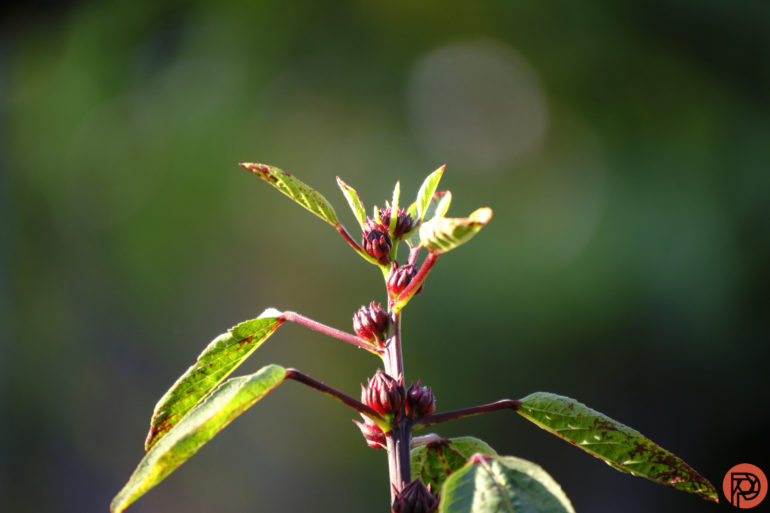
Velvia is likely one of the most popular Fujifilm film simulation. Folks love vivid colors and those Fujifilm tones always hit just right. It’s the perfect simulation to use on your vacation. Photographers have used Velvia for years to document the world around them. And using a lens like the Tamron 18-300mm f3.5-6.3 Di III-A VC VXD lets you do it in the spirit of those vintage photos.
Gear Used
We’re choosing this gear because it’s simple and helps a broad range of photographers do pretty much everything they need to do. You can photograph a stunning landscape while on a hike. When you and your friends have made it to the top of the mountain, this combo can shoot a wonderful portrait. What’s more, there’s little reason to want or need post-production. Cameras like the X Pro 3 have features like the Blue Chrome FX setting and 400% dynamic range that make images look like you edited them anyway. Shooting with the Fujifilm Velvia film simulation gives you rich colors that will earn all the hearts on social media platforms.
Shooting Fujifilm Velvia Like It’s the 1990s
If you peruse the Flickr archives to see how people used Velvia, you’ll notice it’s for a slower type of photography. Today’s world and marketing is all about doing things fast. But passionate photographers know we need to slow down and enjoy our hobby too. The archives show us that folks used Fujifilm Velvia for things like landscapes, travel, candid portraits, flowers, and more. These are things that can be done with the Tamron 18-300mm f3.5-6.3 Di III-A VC VXD.
To start, let’s lean into shooting like it’s a long time ago. Lock the white balance to Daylight or 5500K. This is what Velvia is balanced to, but it was always adjusted in the darkroom. (Some folks embraced and adored the look of it as is though.) Then try to shoot at ISO 160 as much as possible. Fujifilm’s cameras don’t really go lower than that, so it’s the most we can work with. Further, give the film 1/3rd or a full stop of extra light. (Of course, do this to taste.) The big thing here is to try not to adjust the ISO setting. Modern cameras make things incredibly simple with variable ISOs. And of course, if you really need to do so, then please do. But locking the ISO gives you more of an authentic film experience and makes you think and shoot differently. Sometimes you may need a tripod, but the Tamron 18-300mm f3.5-6.3 Di III-A VC VXD can give you image stabilization as needed. At other times, you’ll really need to set the camera down and capture the world over a few seconds.
If you think about some of the most famous places you’ve seen Fujifilm Velvia photographs, it’s probably in old magazines like National Geographic. Do you remember the first time you saw images of zebras and lions in the Safari? Or what about photos of the mountains in Asia? Who can forget about some of the breathtaking macro photos of rare and endangered species? Chances are that a lot of them were shot on Velvia.
It will also mean that you use other tools like graduated ND filters. With a 67mm filter thread, the Tamron 18-300mm f3.5-6.3 Di III-A VC VXD can easily accept lots of them while keeping the entire package small. And in those moments where you don’t have a tripod, you can hold your breath and rely on Tamron’s image stabilization.
The Advantages of a Modern Lens
Film surely serves a wonderful purpose. But most passionate photographers these days primarily shoot digital. And with the Tamron 18-300mm f3.5-6.3 Di III-A VC VXD, you get a ton of major advantages that film photographers didn’t necessarily get.
Tamron’s lenses have taken a major step forward with promises of weather resistance, faster autofocus, and much more. Combined with some of Fujifilm’s higher-end bodies, they’re ready to take on any of nature’s toughest situations on land. We’ve used them in monsoon-like rains with little issues. We’ve also used these lenses for professional shoots and found them incredibly versatile. Specifically, the Tamron 18-300mm f3.5-6.3 Di III-A VC VXD does what isn’t really possible for the Fujifilm camera system. Some passionate photographers are so good they can shoot with anything that’s put in their hands. Let’s be honest, digital makes everything easy. With a lens like this, a Fujifilm shooter can truly shoot anything they desire. And for other situations, you can surely switch to your Fujifilm primes if you need and want. But the Tamron is small, lightweight, and highly capable.
What’s even more incredible is that in Capture One, the Tamron 18-300mm f3.5-6.3 Di III-A VC VXD seems to almost never need correction. This isn’t surprising for a Tamron lens, but it’s surely surprising for a superzoom! There was a time when some photographers would never shoot with them, but those days are gone!
We suggest you give it a shot!
This piece is presented in partnership with TAMRON. We’ve independently and ethically reviewed all the products in this post already without sponsorship. And we worked with them to recommend a few key gems to you.











